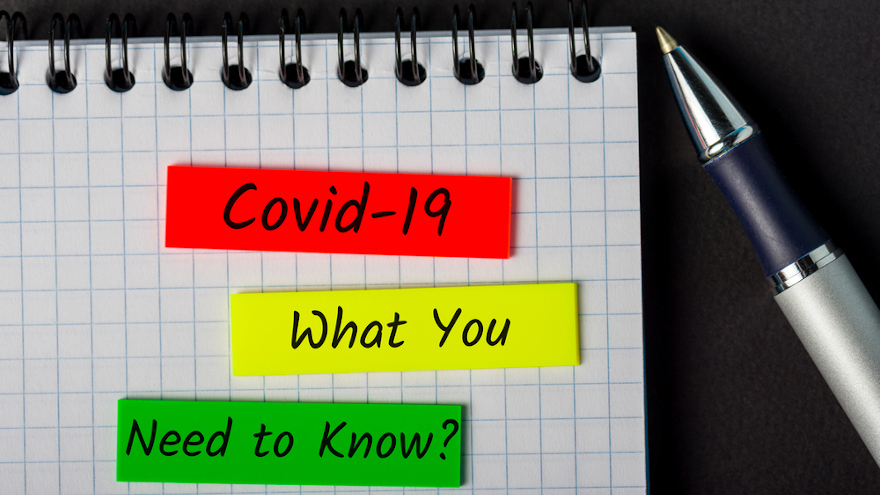Treasury, IRS, US Chamber share critical CARES Act updates

Late on Monday, crucial updates from the U.S. Department of the Treasury and the Internal Revenue Service arrived about programs aimed to help both businesses and individuals through the Coronavirus Aid, Relief, and Economic Security (CARES) Act.
Furthermore, the U.S. Chamber of Commerce created a guide to help small businesses, independent contractors and gig economy workers prepare to file for a coronavirus relief loan under the CARES Act.
The updates began with the Treasury Department, which published the following resources to assist eligible businesses in applying for payroll support to enable the continued payment of employee wages, salaries and benefits, and for loans pursuant to the CARES Act:
— Guidelines and application procedures for payroll support to air carriers and contractors under Division A, Title IV, Subtitle B of the CARES Act can be downloaded here.
— Procedures and minimum requirements for loans to air carriers and eligible businesses and national security businesses under Division A, Title IV, Subtitle A of the CARES Act can be downloaded here.
The U.S. Chamber recapped that last week Congress passed the CARES Act, which allocated $350 billion to help small businesses keep workers employed amid the pandemic and economic downturn. Known as the Paycheck Protection Program, the initiative provides 100% federally guaranteed loans to small businesses that maintain their payroll during this emergency.
Furthermore, the Chamber pointed out these loans may be forgiven if borrowers maintain their payroll during the crisis.
Earlier on Monday, the National Automobile Dealers Association launched an initiative to help local dealerships navigate business and regulations in the coronavirus environment will provide information about coronavirus developments affecting dealership operations.
Also, the National Independent Automobile Dealers Association, in partnership with CliftonLarsonAllen, is hosting a special, free webinar titled, “The CARES Act and its Impact on the Independent Dealer.” The session is set for 2 p.m. ET on Wednesday.
The Treasury Department said it will continue to provide guidance and updates on program implementation under the CARES Act online at www.Treasury.gov/cares.
IRS answers several pressing questions
Also late on Monday, the IRS announced that distribution of economic impact payments will begin in the next three weeks and will be distributed automatically, with no action required for most people.
However, officials said some seniors and others who typically do not file returns will need to submit a simple tax return to receive the stimulus payment.
The IRS went on to answer some of the most pressing questions individuals might have about assistance, including:
Who is eligible for the economic impact payment?
Tax filers with adjusted gross income up to $75,000 for individuals and up to $150,000 for married couples filing joint returns will receive the full payment. For filers with income above those amounts, the payment amount is reduced by $5 for each $100 above the $75,000/$150,000 thresholds. Single filers with income exceeding $99,000 and $198,000 for joint filers with no children are not eligible.
Eligible taxpayers who filed tax returns for either 2019 or 2018 will automatically receive an economic impact payment of up to $1,200 for individuals or $2,400 for married couples. Parents also receive $500 for each qualifying child.
How will the IRS know where to send my payment?
The vast majority of people do not need to take any action. The IRS will calculate and automatically send the economic impact payment to those eligible.
For people who have already filed their 2019 tax returns, the IRS will use this information to calculate the payment amount. For those who have not yet filed their return for 2019, the IRS will use information from their 2018 tax filing to calculate the payment. The economic impact payment will be deposited directly into the same banking account reflected on the return filed.
The IRS does not have my direct deposit information. What can I do?
In the coming weeks, Treasury plans to develop a web-based portal for individuals to provide their banking information to the IRS online, so that individuals can receive payments immediately as opposed to checks in the mail.
I am not typically required to file a tax return. Can I still receive my payment?
Yes. People who typically do not file a tax return will need to file a simple tax return to receive an economic impact payment. Low-income taxpayers, senior citizens, Social Security recipients, some veterans and individuals with disabilities who are otherwise not required to file a tax return will not owe tax.
How can I file the tax return needed to receive my economic impact payment?
IRS.gov/coronavirus will soon provide information instructing people in these groups on how to file a 2019 tax return with simple, but necessary, information including their filing status, number of dependents and direct deposit bank account information.
I have not filed my tax return for 2018 or 2019. Can I still receive an economic impact payment?
Yes. The IRS urges anyone with a tax filing obligation who has not yet filed a tax return for 2018 or 2019 to file as soon as they can to receive an economic impact payment. Taxpayers should include direct deposit banking information on the return.
I need to file a tax return. How long are the economic impact payments available?
For those concerned about visiting a tax professional or local community organization in person to get help with a tax return, these economic impact payments will be available throughout the rest of 2020.
Where can I get more information?
The IRS will post all key information on IRS.gov/coronavirus as soon as it becomes available.
“The IRS has a reduced staff in many of its offices but remains committed to helping eligible individuals receive their payments expeditiously,” agency officials added. “Check for updated information on IRS.gov/coronavirus rather than calling IRS assistors who are helping process 2019 returns.”
Assistance from the U.S. Chamber
The U.S. Chamber of Commerce shared information to help small businesses like dealerships navigate the challenges connected with getting federal assistance.
The U.S. Chamber’s Coronavirus Small Business Guide — available at uschamber.com/sbloans — outlines the steps small businesses should take now and prepare to access much-needed funds to help keep their workers on the payroll during this disruptive period.
Chamber officials stressed that further guides will be developed as the CARES Act becomes implemented.
“The U.S. Chamber of Commerce is working with state and local chambers across the country to provide businesses with the information they need to stay afloat and keep people employed during the pandemic,” U.S. Chamber of Commerce president Suzanne Clark said in a news release.
“This comprehensive guide ensures small business owners fully understand what aid is available to them and how to access those funds as quickly as possible,” Clark continued. “We remain committed to ensuring no family or business goes bankrupt due to financial hardships associated with the coronavirus.”
Additionally, to help small businesses, the U.S. Chamber of Commerce highlighted that it has compiled an interactive map to show the aid available to them on a state-by-state basis. That information is available here.


